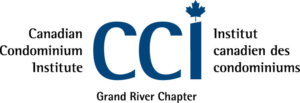Proactive Softscape Budgeting: Plan Ahead
Spring is here! The birds are singing, and the flowers are blooming! The garden centres are open with flowers a plenty, and you’re thinking about how you would like the property to look for the upcoming season. Just like anything else, it’s important to ask – do we have the money?
For any project, a budget should be set early on for what you and the board would like to do with the common elements in the upcoming year. The process should start when preparing the budget for the upcoming year.

First, always consider your corporation’s financial standing. Does the corporation have a general fund surplus or deficit? If it’s in a deficit, then the board may not want to spend on softscapes until the corporation is “back in the black”. If there is a surplus, then there may be more options.
When the board is preparing their budget for the forthcoming fiscal year, a line for non-contract summer landscaping should be included that would account for additional lawn care such as fertilizers and over-seeding, planting of trees and shrubs, flowers and mulch. These are items that are not already included in the monthly landscaping contract. It can be hard to decide on these things in the dead of winter, but it’s important to set a budget for it if you plan to make any improvements beyond basic monthly maintenance.
Remember to review your reserve fund study to see if there are any allowances for landscaping renewal and verify what type of work these funds allow for. Replacing existing trees or shrubs that have succumbed to damage or disease is a valid reserve fund expense, if included in the most recent reserve fund study.
 With a budget in place, it’s time to create a detailed plan of what needs to be done once spring arrives. With the upkeep of softscapes being an easy cost to put off, they may have been ignored for several years. As such, bringing them back up to an acceptable level may require a plan that spans several years.
With a budget in place, it’s time to create a detailed plan of what needs to be done once spring arrives. With the upkeep of softscapes being an easy cost to put off, they may have been ignored for several years. As such, bringing them back up to an acceptable level may require a plan that spans several years.
The first step is to schedule a walk through the property with your landscape contractor once the weather is good enough to clearly see the state of things. Identify any deficiencies, dead or dying plantings, or deteriorating hardscapes. Rather than replacing what has been there in the past, consider new design ideas and improvements. For example, a grassy area subject to high foot traffic will never last if it’s an obvious pedestrian shortcut. Perhaps the grass could be replaced with a more durable hard surface, or using the shortcut could be discouraged by adding rocks or shrubs. The same goes for a garden design and location that invites its use as a doggy toilet. Consider the lifespan of the softscape and choose planting choices that require as little maintenance as possible.
When getting quotes from landscapers, a good rule of thumb is to get quotes where the potential work is broken into options. This allows the board to pick and choose what can be completed without going over budget. Depending on your level of confidence and trust in your landscape contractor, consider repeating the exercise with one or two other landscapers. Not only could they provide you with cost comparisons, but they may also be able to provide you with a whole new vision!
Now get those hands dirty and enjoy the beauty of nature!

BBS, LCCI, Manager, RLB LLP
John Hayes,
P.Eng., Board Member, CCI Grand River Chapter



 with the
with the



